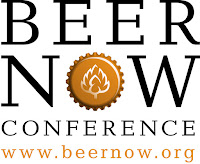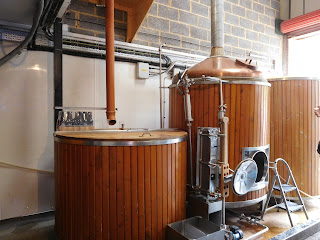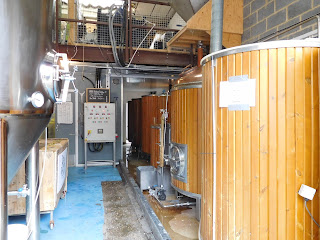 |
| Just about right |
As a regular blogger I have always tried to include relevant
photos in my posts, as not only do they break up what can sometimes be, large
and somewhat daunting-looking blocks of text, but they also attract the
reader’s interest and help draw him or her into the main subject matter.
I have tried, wherever possible, to use my own photos, as
not only are they more personal, but they are often more relevant. Of course,
this is not always possible, but relying upon online sources is often fraught
with difficulties, especially over the issue of copyright, so it is always
preferable to try and use original and topical photos taken by oneself.
Now
I used to fancy myself as a bit of a lens-man, and back in the day I had a
pretty decent 35mm SLR, complete with a number
of interchangeable lenses. I also had the equipment to process my own black & white films; it's still up in the loft! However,
times change and technology moves on, and the world of celluloid film, along with
developing and printing photos, now seems like ancient history, following the
rise of modern digital photography.
 |
| Too much reflected light |
Despite
jibes from my family, about lugging all that camera gear around, I stuck with
my trusty Pentax, until about eight years ago, when I finally accepted the
inevitable, and switched to digital. So from carting a bulky SLR around, I went completely
the other way and started using the camera on my Smartphone.
It
made sense, as I normally had the phone with me. It was also
light enough to carry in my pocket, easy to use, and I didn’t have to wait for the photos to come
back from the processors. More to the point, digital photos are easy to upload
and can, if necessary, be altered using simple computer software. The only
trouble was, the quality was nowhere near that achievable from a
decent camera.
 |
| It's easier with dark beers |
I
bit the bullet again back in 2015, when I pooled the money I’d been
given for my 60th birthday, and bought a half decent, compact digital camera.
The difference in quality was noticeable straight away, so having now acquired
a reasonable camera it seemed a good idea to learn how to get the best out of
it.
Step
forward renowned Dutch photographer TeoKrijgsman, who gave a presentation on “Beer Photography”, at last
month’s European Beer Bloggers Conference in Amsterdam.
Perhaps the presentation should have been titled “How to take eye-catching
photographs of beer”, because whilst I had never heard of Teo before the conference,
once he had shown us some of his work, I realised that here was someone who
could take photos of beer and make them look really sexy!
Teo
started with the basics and said that whilst the advent of digital photography
has made things a lot easier, taking a good photo is as hard now as it was 100
years ago. So to try and précis what we were told, especially in relation to
photographing beer, I will attempt to break the topic down by listing out some
of the bullet points.
- The basis of a good image is making the right choices.
- It is important to know what goes on inside the camera, as well as what is happening in front of it.
- It is vital to have total control over this, as it is the key to taking a good photograph,
- A tripod is often essential in order to hold the camera still, and in one place.It also ensures your photos are sharp, and in focus.
- When photographing beer, remember it is a product and photographing a product well is one of the hardest things to so.
 |
| Too much refelction from use of flash. (Good head though) |
Moving
on and going into slightly more detail, remember that light will pass straight
through glass, almost as if the glass does not exist. It is therefore vital to
understand the importance of light when making a photo; especially one
incorporating a glass of beer.
Light
will obviously pass through the beer, but some will also be reflected back; the
amount varying with the colour and/or clarity of the beer. A glass of beer will
have foam on top of the beer, and bottles will normally have labels. Bottles in
fact can be tricky because of the colour of glass, the presence of any labels
and, of course, the curved shape of the bottles. This curvature effect also applies to
a glass.
To
overcome problems associated with reflected light, make sure there is a light
source behind the beer, when taking the photo, but try and ensure the source of
the light is out of sight. Photographing a glass of beer with a window, or a
lamp behind is one way of doing this, but make sure the light source is not so
powerful that it “washes out” the rest of the image. A more subtle way of
providing additional light, is to place a piece of white paper underneath the
glass.
 |
| A good effort |
Professional
photographers use many tricks to enhance the look of the product they are
photographing, and in the case of beer, Teo told us how a pinch of salt, added
to the beer, causes it to foam quite dramatically, creating that tight, thick
head which advertisers like to show us. Another trick is to spray a mixture of
glycerine and water on the outside of the glass, using one of those cheap,
hand-held spray-bottles. This gives the impression of beads of condensation on
the outside of the glass or bottle, with the added advantage that these
droplets won’t run down the outside and spoil the effect!
Teo
did show us some quite stunning examples of his work, in the form of a series
of magazine shots he did for Dutch brewer, Grolsch, but these were all
carefully staged and composed, and not the sort of work taken in the heat of
the moment in a crowded pub or bar.
 |
| Outside in shaded light - just right |
Obviously
the detailed stage-management of the scene and the sorts of tricks mentioned
above are for professionals, and as most of us would want to drink the beer
once the shoot has finished, adding salt to it, or spraying glycerine around,
would quickly render the beer unpalatable. So in the question and answer
session which followed, I asked Theo what tips he could give for photographing
beer in a “live” environment. By that I meant in a pub, or bar, both of which
could be busy, with all sorts of distractions both in front of the subject and
behind it.
 |
| Subtle backlight |
This
is important, as many writers and bloggers will want to write something about
the beer they have just drunk, so they need to know how to take the best
picture under what an often be, trying circumstances. Theo drew attention to
the window option, highlighted earlier, but accepted that as this wasn’t always
practical, or even possible, the next best thing was to provide light either
directly behind the glass or bottle, or from the side. (Side-lighting is more
effective for bottles, because the glass will normally be coloured).
 |
| Don't use flash when photographing unfiltered beers! |
One
of the best and most practical light sources is the torch, which many people
have as an accessory on their Smartphone, so after the afternoon’s session had
finished, many of us had a go at using this technique. You can see some of my
efforts interspersed amongst the text of this blog, and there are also some
examples showing what not to do. But in general I feel we all came away from
the session with an enhanced knowledge of how to take a better photo and, more
importantly, how to apply some of these techniques to photographing beer.


































